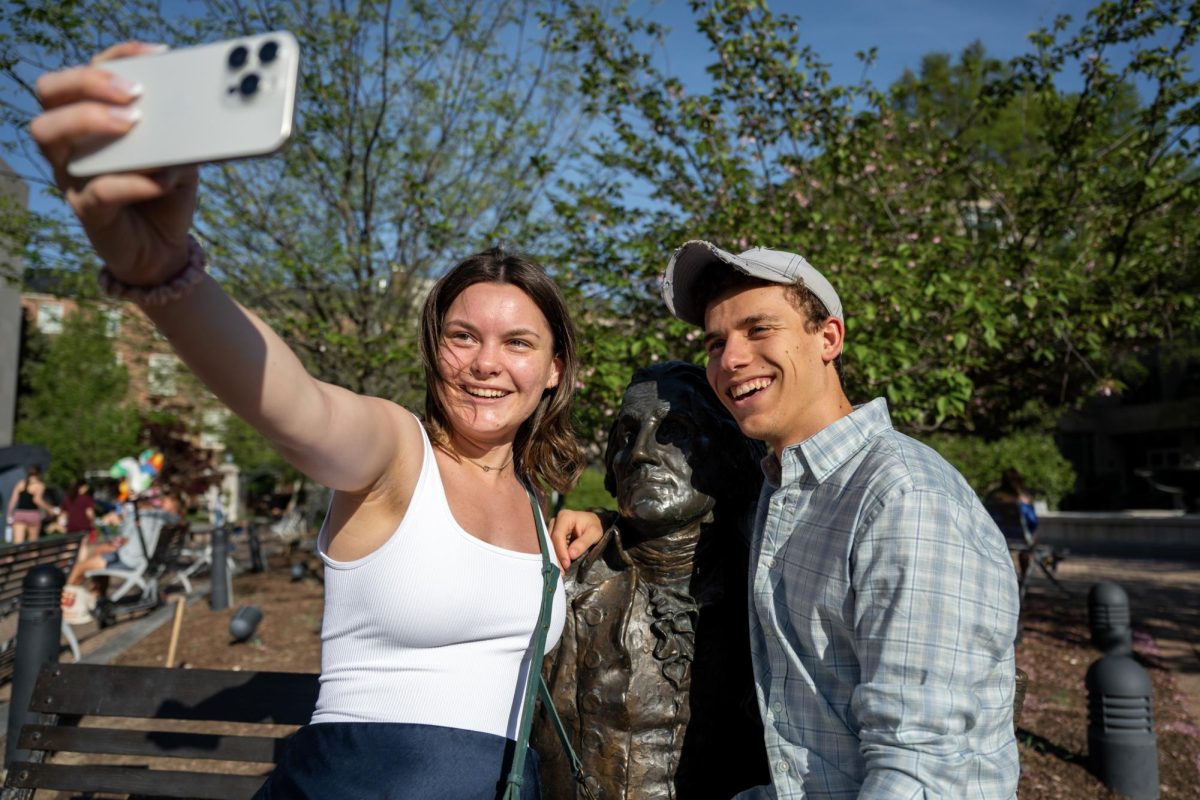The circular layout of the Hirshhorn Museum and Sculpture Garden allows light to pass through its modern collection, but for the museum’s latest exhibit it opted for the darkness of the basement instead.

For the next four months, the Hirshhorn will display “Dark Matters: Selections from the Collection,” a new exhibit that addresses different artistic interpretations of darkness. Isolated from the other galleries, the collection allows viewers to connect with the artists’ renditions in a bleak atmosphere.
The location was chosen as part of a traditional Hirshhorn practice utilizing the underground space to display works from its permanent collection. The exhibit brings together different media, styles and artists under one common theme – in this case darkness, Jenny Leehey, the Hirshhorn’s programs assistant, said.
The artists’ views on darkness vary, as some choose to express fear and violence while others convey its effects of timelessness and renewal.

For viewers, these different meanings may force questions about their own perceptions of darkness.
“The theme was prompted by Miguel Calderón’s ‘The Steps of the Enemy,’ which was the first work we selected for the video installation gallery,” Mika Yoshitake, assistant curator said.
After securing the pivot piece, the next step was to decide on an umbrella theme around which to create an exhibit. Ideas discussed included politics of fear, disorientation of one’s sense of place and the ramifications of corruption.
“We then began investigating works that were predominantly black or dark in the collection and eventually decided on a theme that could capture the formal, metaphorical as well as experiential implications of darkness,” Yoshitake said.
To foster these ideas, the Hirshhorn assembled a collection of pieces ranging from paintings to sculptures and even a pitch-black, interactive labyrinth for visitors to stumble through.

While the art doesn’t share a common historical movement or generation, all of the pieces represent darkness in some form.
The interpretation of the theme may be obvious, like Joseph Beuys’ “F.I.U Blackboards,” which presents the blankness of a slate wiped clean. Other pieces such as Troy Brauntuch’s “Untitled,” a crayon depiction of a slaughterhouse tinted in red, offer a subtler darkness and an entirely different meaning.
Artists Bradley McCallum and Jacqueline Tarry are also featured in the exhibition for their examination of the absence of light within a historical context.
Their work, “Amelia Boynton” (2008), is from a larger series called “Whitewash” that examines and revisits selected images from the Civil Rights era, McCallum explained. The painting is dual layered, part oil painting, part silk scrim photograph.
The show ignores time, movements and border, compiling pieces from the United States, Mexico and Europe, while also debuting three recent acquisitions that have never been displayed at the Hirshhorn before.
“The theme also lends itself to a more personalized, intimate experience for viewers for an active sense of understanding and appreciating contemporary art,” Yoshitake said.
The exhibition will run until May 31, when the museum will continue its study in darkness but rotate new material.






